The first time I heard “you should spend as much on a scope as you did on your rifle” it was from a guy behind the counter at a local gun store. Now in the context of a typical hunting rifle that is pretty sage advice, however as you get into the realm of precision rifles, it gets a little more complicated. When the cost of a precision rifle can reach into the thousands of dollars it tends to be a little less practical, and unnecessary, to spend as much on the scope as you did the rifle. Starting out though, when you’re on a budget, finding a suitable optic for precision rifle competition that won’t break the bank isn’t easy. However, Burris is making the search easier with their XTR II line of scopes that are tailor-made for the beginning shooter at a price that some will find very easy to swallow.
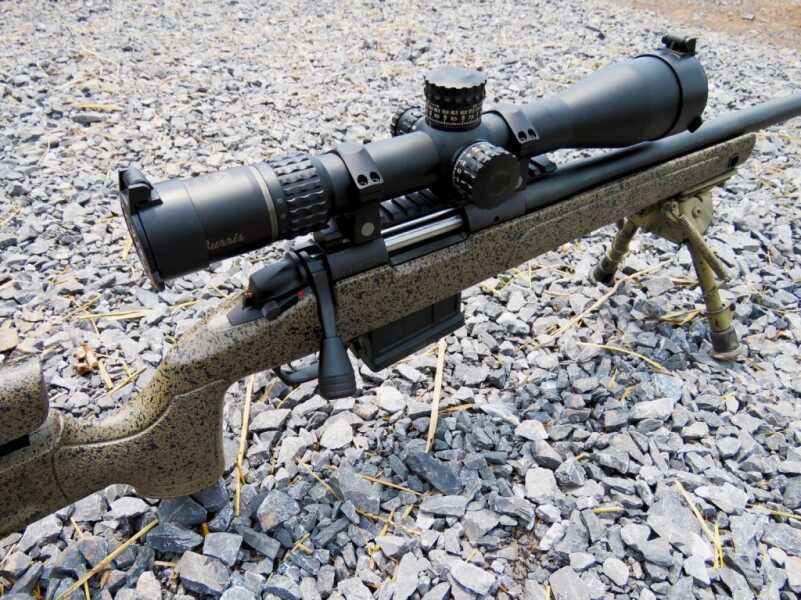
At a shade under 15 inches long the 4-20 XTR II is compact for its magnification range to fit a variety of rifles. The Burris XTR II 4-20X50 was at home on this Bergara HMR easily going from 100 to 830 yards.

When you enter the second revolution there are index lines under the turret and additional number markings to keep you straight.
First Focal Plane
A good competition riflescope has a first focal plane (FFP) reticle, parallax adjustment, accurate turret adjustments, and, most importantly, is very dependable. There was a time to get some of those features you’d have to pay a good bit of money but as they say, times are a changing. I’ve been using a Burris XTR II 4-20X50 riflescope for close to a year now on several rifles and in my opinion it easily checks the boxes above and more in terms of a practical precision riflescope. I think Burris was paying close attention to the market when they created these scopes and I commend them for it. The 4-20X starts with a 34mm one-piece main tube that provides strength and generous ring spacing that can accommodate both long and short action rifles. The scope’s noteworthy 90 MOA of internal adjustment is more than enough to get even a slow moving .308 match round out to 1000 yards and beyond. The 50 mm objective lens helps you find those targets by helping to provide an ample field of view at all magnification ranges. However, I was particularly impressed by very audible and tactile feel of the elevation and windage turrets on this scope, for the money they were very good. Typically, when you get a scope in this price range the turrets can sometimes feel mushy but that’s certainly not the case here. Another feature that I was happy to see was 10 mil per turn turrets and a zero stop was just icing on the cake. Those are two important features that I look for in an optic that I’ll be using for competition because it will keep me from getting lost in the adjustments. I’d also like to note that the knurling on the turrets and magnification ring are a little aggressive but not so much that it hurts to use them. I mean it definitely won’t let your fingers slip but if they did you’d probably leave some DNA behind. The left side of the scope is populated by the integrated parallax and illumination knob that conserves space by nesting one over the other. The illumination control has eleven settings which can be turned off in between settings and an auto shut-off feature. In plain terms from the outside, this scope has a lot going for it, especially for its street price of about $1,149.
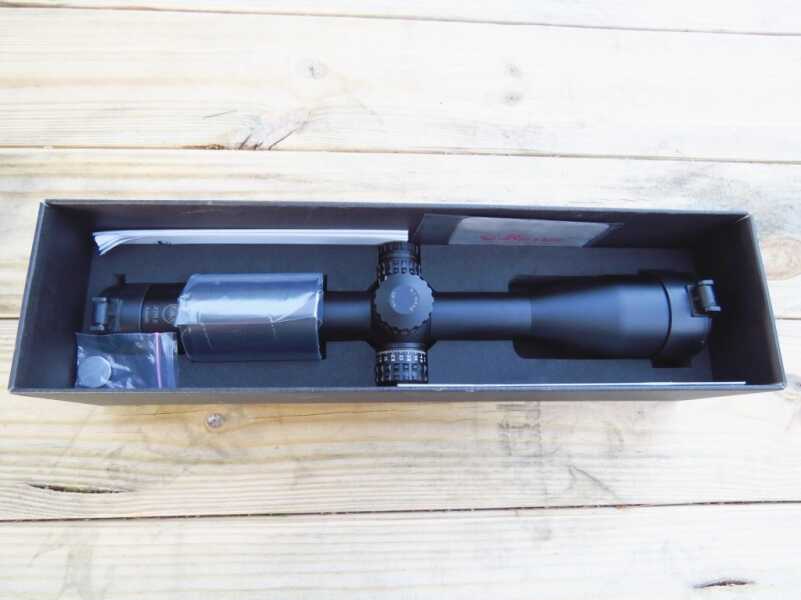
The Burris XTR II 4-20×50 comes very well packaged in cut foam that securely nestles the scope and its accessories.
Article Continues Below
SPECS

This wooden gate is 1,130 yards away with the magnification at 20X, although the picture really doesn’t do the scope justice.
- Magnification: 4-20X
- Objective Diameter: 50mm
- Reticle: Special Competition Reticle (SCR) (Model 201042 tested)
- Main Tube Diameter: 34mm
- Elevation Adjustment: 26.2 mils (90 MOA)
- Windage Adjustment: 16 miles (55 MOA)
- Click Value: 0.1 mrad
- Parallax Adjustment: 50 yds. – infinity
- Overall Length: 14.9 in.
- Weight: 30.9 oz.
- MSRP: $1,149
- Manufacturer: Burris
Things get better inside though when you start to look through the optic. Back in the day, Burris had some kooky reticles like a ballistic mildot the blended MOA hold-overs below center with miliradian dots everywhere else. This was kind of confusing and frankly counterproductive when a straight up mil dot reticle would’ve been better off. That being said, The XTR II doesn’t appear to suffer from these reticle design blues and instead, they have used some very well thought out reticles. My particular 4-20 has what Burris calls the SCR, which stands for Special Competition Reticle with miliradian subtensions; an MOA version is also available. The SCR has exactly what the competition shooter needs with 2/10 mil hash marks on the horizontal plane for accurate wind holds, 1/2 mil hash marks on the vertical, and 1/10 mil ranging marks. As I had mentioned earlier the reticle is placed in the first focal plane, another great feature for the practical precision rifle shooter. The FFP reticle allows the shooter to use the features of the reticle on any magnification setting, whether that’s 20X or 8X the reticle spacing will be correct. That way if they have a stage where it’s better to be on a lower power they don’t have to worry about the reticle being off and potentially blowing a shot.
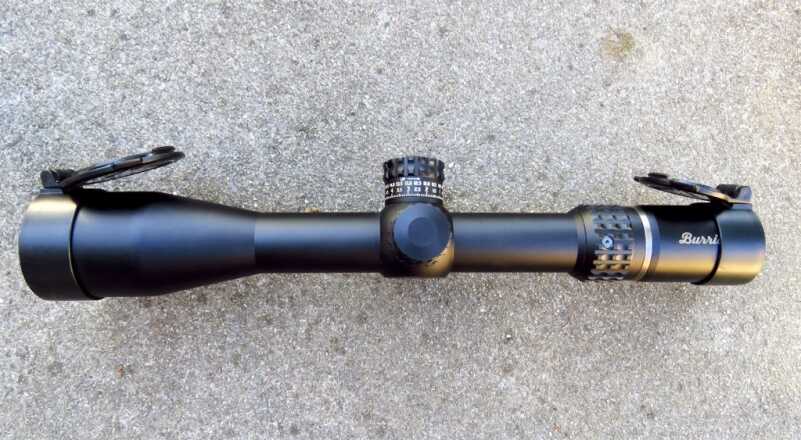
The 4-20X comes with some pretty good scope caps that fold almost always back against the scope to maintain a lower profile then some other brands.
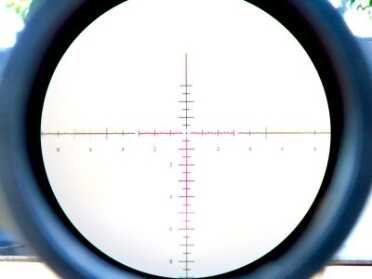
When illuminated, the SCR lights up major portions of the reticle so that holdovers and wind compensation can still be done in low light.
I’ve used this scope on several rifles over the past year, and I’m happy to say that I haven’t experienced any issues. Probably your first question is: How is the glass? In the grand scheme of things this is also the least important question, but I can understand its significance to someone about the spend their hard earned money. I’ve owned and used quite a few scopes over the years and the optical performance of this scope isn’t bad, not great, but not terrible either. It’s certainly not on the level of a Khales, Nightforce ATACR, Schmidt and Bender, or Vortex Gen II Razor, but those scopes also start out costing about $1,000 more than the Burris. That being said I was able to resolve the individual stones in the foundation of a barn from over 1,000 yards away on the highest magnification setting with this scope so I don’t think you’re going to have any issues not seeing your target. There is some chromatic aberration at the top end and some distortion at the very edges of the field of view but again it’s not too bad or distracting. I’ve certainly seen worse in other scopes that cost significantly more. In terms of glass quality, you’re getting what you pay for in my opinion and that is very good mid-level performance, perfect for someone starting to compete in precision rifle matches.

Some shooters will be happy to know that only the magnification ring turns when adjusting the power setting.
Mechanically I found the scope to be very sound and the tracking to be spot on, which is probably the most important aspect of a scope that’s really going to get used. I like to run a little pre-check on the scopes that I get by twisting all the knobs, turning the magnification ring, and just making sure that everything is working smooth. I think it’s in this area that the Burris XTR II is starting to hit above its price point. The parallax turns easily with just a hint of resistance, the clicks on the elevation and windage knob are consistent, and the magnification ring turns smooth. Now some might think well that’s how it should feel right? Yes, but I’ve used $2,000 scopes where the knobs didn’t feel that good or the parallax had a gritty section in its rotation. Granted, this scope is just a sample of one but it’s off to a good start.
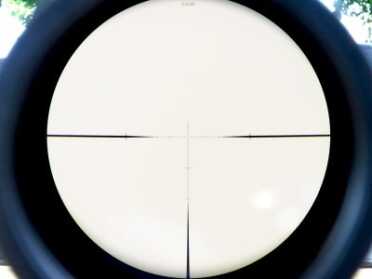
On 4X the large outer stadia creates more of a traditional-duplex reticle so the reticle is still useable.
At the range the scope revealed itself to be rock solid, I remember one range trip taking out the Bergara HMR from 100 yards out to 830 yards using the XTR II. At 100 I was dead on, at 300 I got five good hits on steel, and then went out to 830 to get my DOPE, and started working my way back in. I dialed for every shot, eventually dialing up 6.8 mils for the 830 yard shot and then back again to finally check my zero at 100 yards. At 300 yards it’s interesting to note that group I shot on the way out to 830 yards and the one I shot on the way back in were both a little low of center by the same amount. Back at 100 yards after all of that dialing I center punched the target with five shots. It was much the same when I shot the Tikka T3x and Savage Model 10 Ashbury Precision Rifle, both reviewed for GunsAmerica, while using the Burris XTR II. In all of those rounds between three different mounting platforms, I didn’t have any issues with mechanical accuracy or reliability.
The scope comes with some accessories like a sunshade and flip caps, not to mention a battery, and a small Allen tool to zero the knobs. To me, the coolest accessory though is the flip caps, odd as that might seem but bear with me. You have to understand that for the longest time Butler Creek flip caps were the standard in scope caps. Then things took a turn for the worst and their quality nose dived resulting in many, many tales of broken caps. The Burris caps are neat in that they are kind of like Butler Creek’s but better in a couple of ways. The lid of the cap is made from a harder plastic, almost like the lens cover of a camera and it snaps under the lip of the cap body. To me, this is more secure than the method the Butler Creek caps use to secure the lid to the cap body. Probably the thing that I like the most about the caps is that the lid will fold back to almost 90° to keep a low profile. No more scope caps bumping my baseball hat or getting in the way of my field of view.
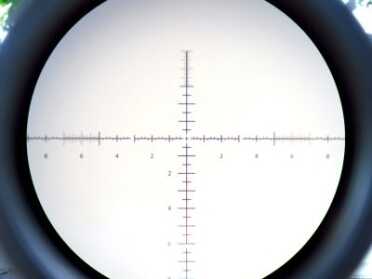
The SCR allows the shooter to make very accurate wind holds and range estimates through the ability to break the reticle down to 0.1 mil increments.
Lasting Impressions
In my opinion, the Burris XTR II scopes represent one of the best options for someone looking for a good quality, dependable optic to get started in long range shooting. Is it going to beat a higher end scope? Probably not, but this scope can easily provide 90 percent of the performance at about 50 percent of the cost. Not only that but this scope is also backed by Burris’ Forever Warranty that will also transfer to future owners with no need for a receipt or warranty card. The 4-20X50 that I reviewed also shares the XTR II line with some other great options like a 5-25X and 3-15X, that are also very suitable for long range shooting of course. The Burris XTR II scopes look good, they perform just as well, and the best part is you won’t have to refinance your house to be able to afford one.
For more information about Burris optics, click here.
To purchase a Burris XTR II on GunsAmerica, click here.


$1150….. Entry Level…. Kiss My …….
I’m afraid I have to agree with both Rob and Dale on this scope’s price point. I’d really like to have a scope like this sitting atop my favorite rifle (for which I honestly didn’t pay $1150). The idea of having the ability to “see” as well as I could with this piece of hardware is only something I can dream about though. I have no idea how I could justify this purchase!
Sorry, but I don’t think “entry level” is an MSRP of $1,149…
100% agree with that statement. “Starting out though, when you’re on a budget…”, ya, a millionaire’s budget. I get precision shooting isn’t going to have great optics at $50-100 price point but $1150 is a bit much to be considered budget or entry level.
I was thinking about trying this long range shooting sport too. But I would have to sell everything I have collected over the last 40 years to get into the game !! TOO RICH FOR MY BLOOD